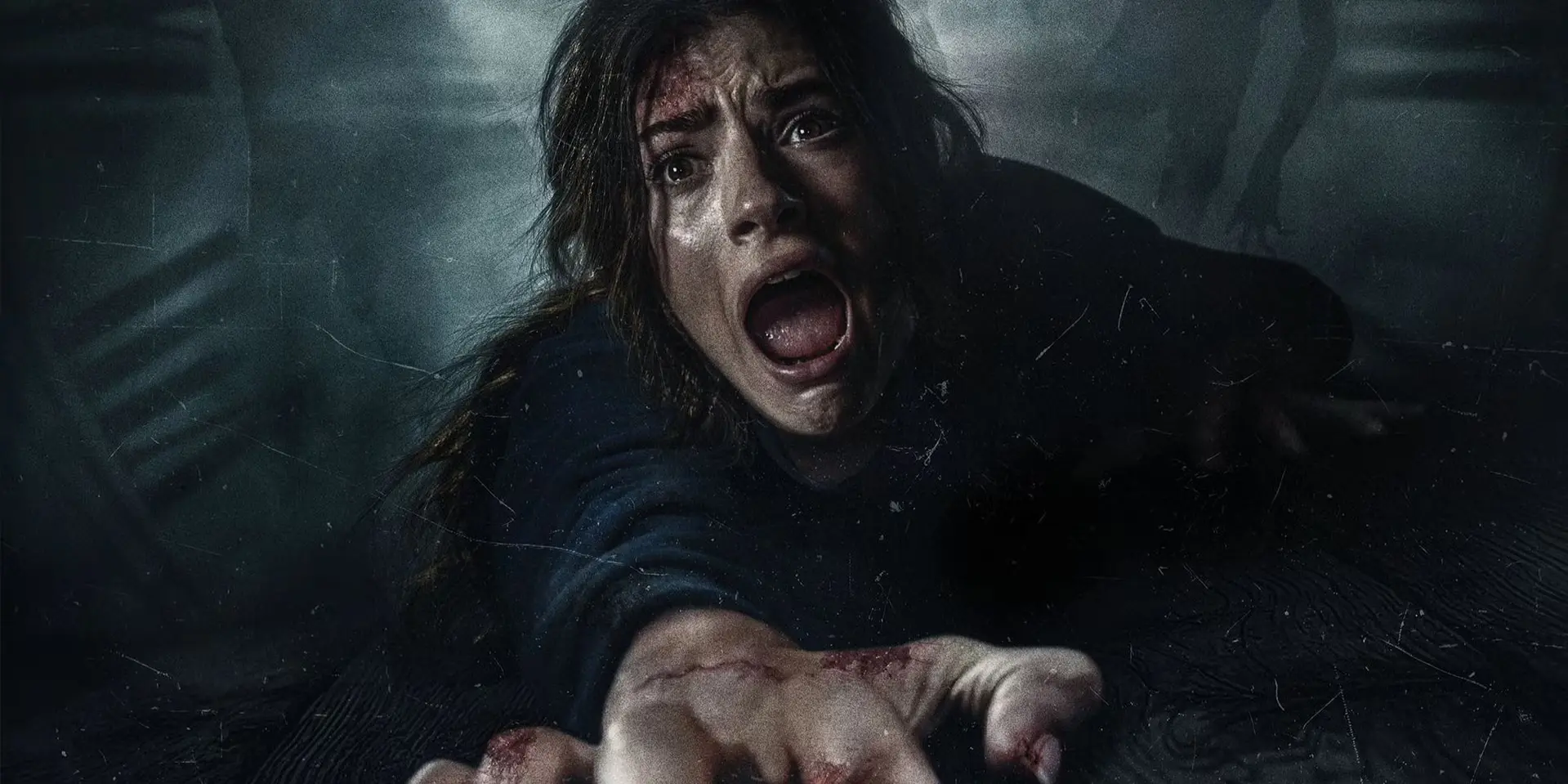Until Dawn arrives in theaters Friday, April 25, transforming the popular horror game into a lackluster hybrid of time loop mechanics and cabin horror tropes. Director David F. Sandberg’s adaptation doesn’t successfully unite various horror elements but rather smashes them together haphazardly. While this collision occasionally results in glorious, bloody, body-exploding sequences, and Sandberg alongside cinematographer Maxime Alexandre effectively builds anticipation for horrors lurking in darkness, nearly everything else falls short. The film suffers from one-dimensional performances, clunky dialogue, and increasingly ineffective scares, ultimately dragging Until Dawn into a bottomless pit of its own making.
The adaptation presents a strange blend of reimagining and direct translation. The movie incorporates some key elements from the source material – including Peter Stormare as a menacing figure in the shadows – while abandoning its snowy setting, stereotypical horny teens, and playfully cheeky tone. This last omission makes Until Dawn particularly strange: without the game’s goofiness, viewers are left with a generic horror movie featuring a high-concept twist where five friends try to survive endless variations of the same terrifying night. Though some humor attempts exist, none are clever enough to elevate the shallow backstory of troubled protagonist Clover (Ella Rubin), who searches for her missing sister. Where the original game, despite its flaws, successfully played with scary movie clichés, this self-serious adaptation rarely seems aware of its own joke potential.
The film does make attempts at meta-commentary. Early in the story, as Clover and her superficially written friends drive through rain into the mysterious valley where they’ll soon be trapped, one character points out that their car represents the safest possible location. The other passengers immediately chastise him – essentially functioning as a vehicle full of horror-savvy commentators who recognize such statements tempt the wrath of horror movie gods. Perhaps they’re correct: Until Dawn demonstrates mean-spirited cruelty toward its characters, but these macabre moments appear too briefly to properly shape the film’s overall tone.
Rather than meaningfully satirizing horror tropes, Until Dawn either embraces them uncritically or worse – when the characters realize they’re caught in a time loop, they allude to but never directly reference similar cinematic premises, avoiding unflattering comparisons. As they attempt to escape their predicament, the film transforms into something resembling an amusement park haunted house rather than a strong horror movie. Each scenario may reference different genre classics, but they remain pale imitations of the originals.
Repetitive Nights, Diminishing Frights
Though each repeated night supposedly differs from previous iterations, several elements consistently reappear: a masked killer makes frequent appearances, and a vain attempt at connective tissue emerges through a flimsy, dead-end supernatural subplot. A section utilizing found footage awkwardly attempts to summarize nights not fully shown, while the introduction of a psychological mystery thread over-explains the monsters carried over from the game. These elements merely recreate familiar horror scenarios without providing additional insights into the various filmmaking techniques that traditionally create effective nightmares. They fail to deepen understanding of Clover’s situation – and crucially, they simply aren’t very frightening. Among the abundant gore, viewers won’t discover either intellectual engagement or emotional resonance.
Sandberg’s directing skills allow him to extract some scares from the shaky material provided by screenwriters Gary Dauberman and Blair Butler. The film concludes with a sequel tease that appears closer in spirit to the original game, suggesting Sandberg might receive his own do-over opportunity. One can only hope any follow-up avoids the timidity and indecisiveness of this initial attempt, which constantly feels pulled between competing directions. One approach half-heartedly references the game, reducing it to mere Easter eggs. The other points toward an original (albeit highly derivative) concept merely coasting on the Until Dawn name recognition. Unfortunately, neither path leads to either safety or horror movie memorability for the unfortunate Clover.
Final Assessment
Until Dawn shares a title and select details with its gaming inspiration but primarily attempts to forge its own identity – with mixed results. While Sandberg successfully creates moments of bloody entertainment and tension, particularly through his darkness cinematography, the underwhelming script undermines both his efforts and the film itself. Though not a complete disaster, watching the one-dimensional characters cycle through horror cinema’s greatest hits creates a watching experience where audiences may find themselves desperately wishing for morning to arrive as quickly as possible.
Also read our A Minecraft Movie review.
